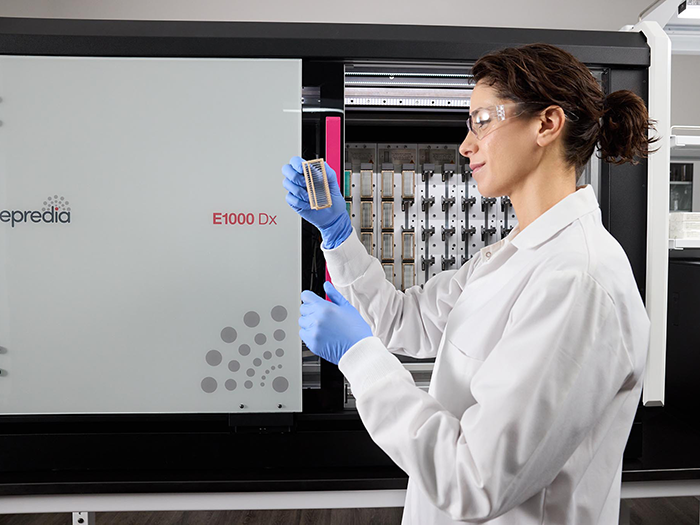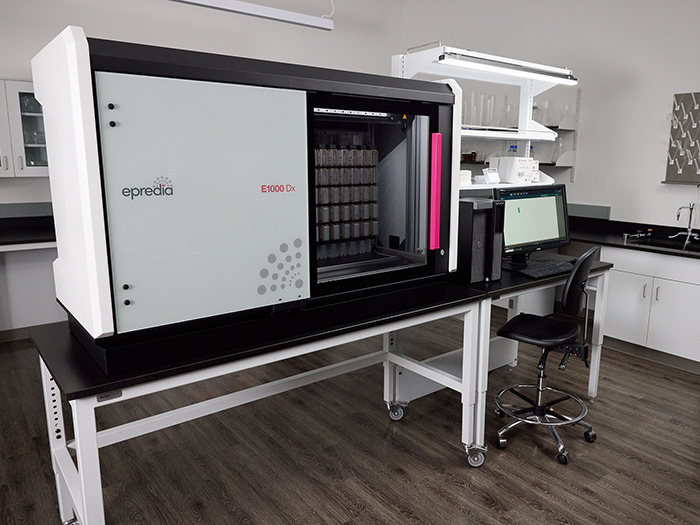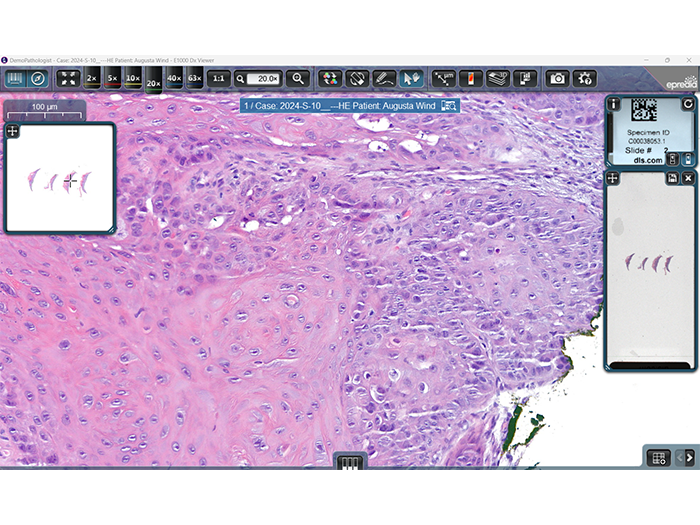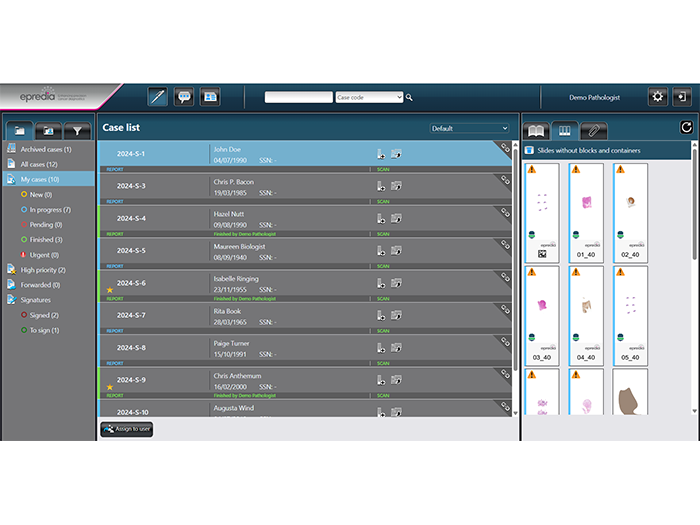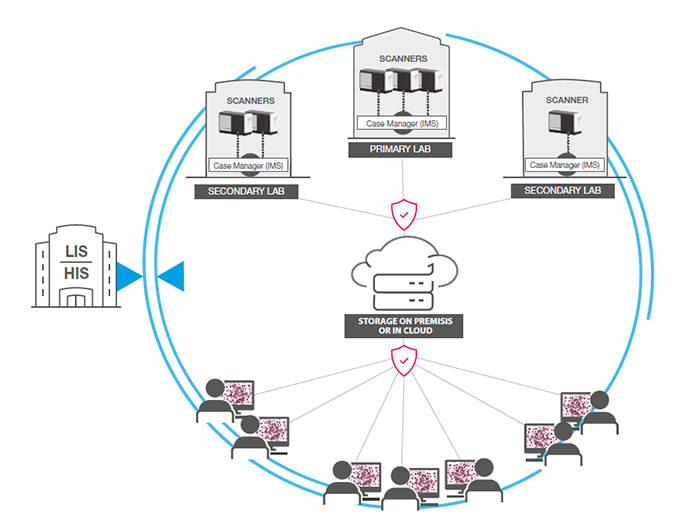Dx Whole Slide Imaging
E1000 Dx Digital Pathology Solution
The Epredia E1000 Dx digital pathology solution, is a comprehensive solution that compliments your existing workflow to help you capture high quality whole slide images with your pathologists and lab staff in mind.
Maximize Throughput
- Helps Eliminate Downtime: Eliminates downtime between slides, as the instrument can immediately start scanning the next slide.
- Continuous Loading: Load slides on demand directly from your coverslipper and prioritize slides based on your workflow needs.
- Safety Container: Avoids scanning disruption by segmenting slides that need additional attention, while continuing the digitisation run.
Automated Quality Control
- Gain confidence that your workflow will not be interrupted due to poor quality images.
- Automated focus quality algorithm rescans slides with advanced settings if out-of-focus areas are detected.
- Remotely monitor your scanners throughput data and workload statistics.
- Email alerts throughout the scanning process for run completion and any errors.
Products
| SKU | Packaged As | Action |
|---|---|---|
| A85200002: E1000 Dx Digital Pathology Solution | E1000 Dx Scanner, E1000 Dx IMS, E1000 Dx Viewer, Barco MDPC-8127, 128 TB Server | Request a Quote |
Pricing
Request a Quote
Request for a SKU
